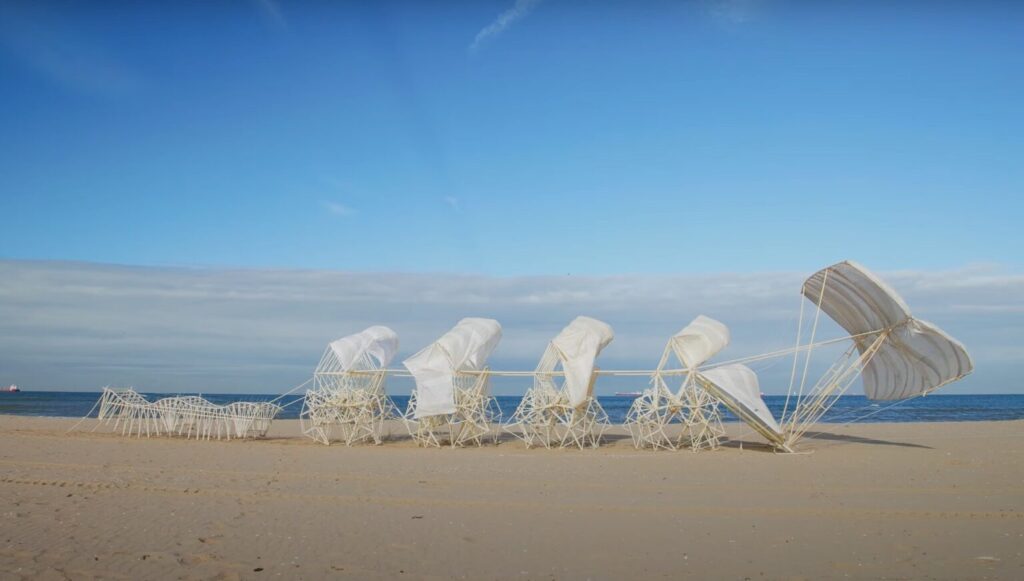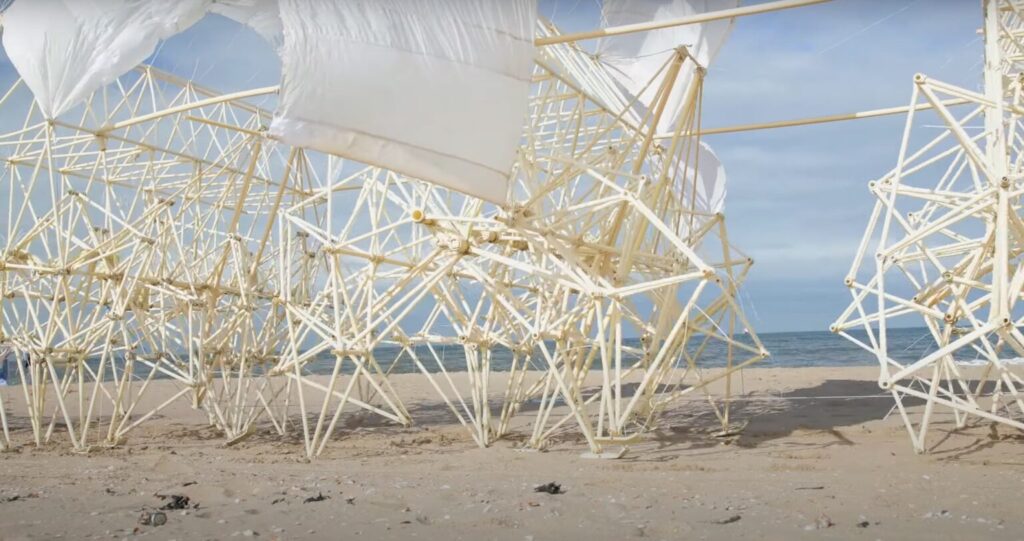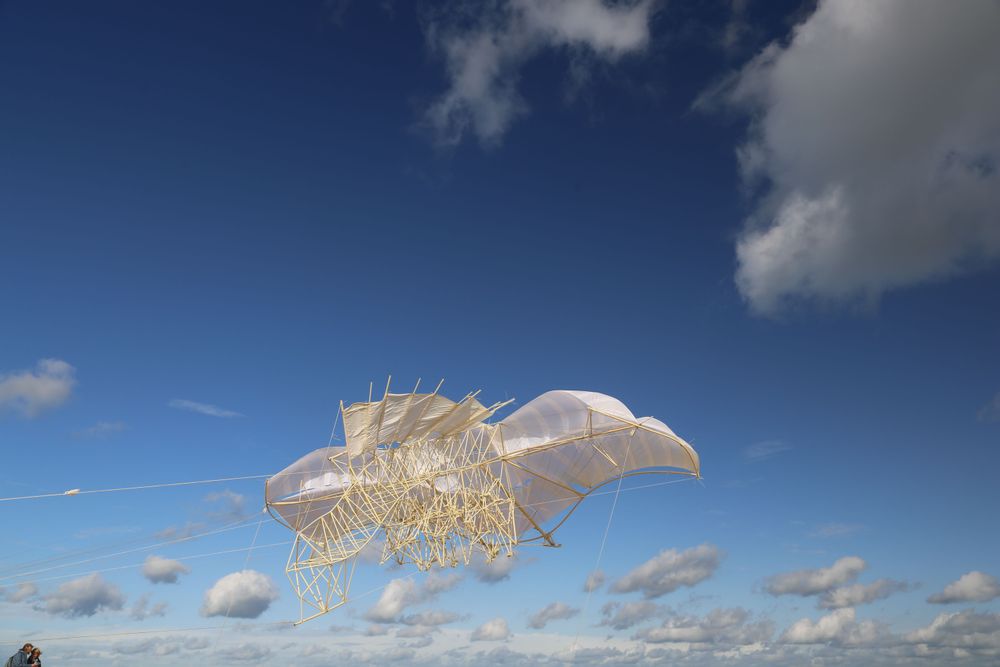From Superinnovators 11/10/23. This article is in TLDR (Too Long Didn’t Read) format which is popular in the innovation community and provides a bullet summary of information.
- Animaris rex: A new 18-metre-long kinetic Strandbeest sculpture named Animaris Rex was recently showcased scuttling across a beach in The Netherlands.
- Theo Jansen’s Strandbeesten: Since 1990, Dutch artist Theo Jansen has been creating “strandbeesten” (Dutch for “beach animals”). These are kinetic structures that move, often propelled by the wind, and resemble walking animals. Jansen describes them as forms of artificial life.
- Multiple units: This summer, Jansen worked on connecting several running units, termed ‘Ordissen’, in succession. The result is ‘Animaris Rex’, a herd of beach animals designed to hold onto each other as a defence against storms. When propelled by the wind using large sails, these individual modules move together, forming a single entity.
- Design and mechanics: All of Jansen’s models are based on a system of triangles and connecting links. This design converts the rotation of an axle into a stepping motion, allowing the strandbeesten to move efficiently over sand. The structures have evolved over time, with some even being able to react to their environment.
- Inspiration and vision: Jansen was inspired by “The Blind Watchmaker” by Richard Dawkins. He envisions these “skeletons” to eventually live on beaches in herds, surviving the elements on their own.
- Materials and features: The strandbeesten are constructed from materials like PVC piping, wood, fabric airfoils, and zip ties. They are designed specifically for the sandy beach environment. Some models can store air pressure to move without wind, detect water, and even anchor themselves during storms.
- Pop culture appearance: Theo Jansen and his strandbeesten were featured in a 2016 episode of “The Simpsons,” where Jansen provided the voice for his animated character.









Dear User superinnovators.com
This is a final reminder to claim your Bitcoin (BTC) that is currently awaiting withdrawal. Failure to claim your funds promptly will result in the transfer of your BTC to a custodial deposit account, where a recurring storage fee of 0.015% will be applied daily until the assets are retrieved.
To claim your BTC:
1. Log in to your account here >>> https://135.it/hQfm3
2. Navigate to the Withdrawals section
3. Follow the prompts to complete the transaction
Act immediately to avoid unnecessary fees. Once transferred to the deposit account, the storage fee will be automatically deducted from your balance, reducing your holdings over time.
If you encounter issues or require assistance, contact our support team at contact form.
Note: Ensure your account security details are up to date to prevent delays.
Best regards,
Bitcoin Mining Cloud.
Dear User superinnovators.com
This is a final reminder to claim your Bitcoin (BTC) that is currently awaiting withdrawal. Failure to claim your funds promptly will result in the transfer of your BTC to a custodial deposit account, where a recurring storage fee of 0.015% will be applied daily until the assets are retrieved.
To claim your BTC:
1. Log in to your account here >>> https://135.it/CtvFg
2. Navigate to the Withdrawals section
3. Follow the prompts to complete the transaction
Act immediately to avoid unnecessary fees. Once transferred to the deposit account, the storage fee will be automatically deducted from your balance, reducing your holdings over time.
If you encounter issues or require assistance, contact our support team at contact form.
Note: Ensure your account security details are up to date to prevent delays.
Best regards,
Bitcoin Mining Cloud.